Artist Interviews 2021
Timothy Dévlin / Haus of Dévlin Responses 
By Laura Siebold
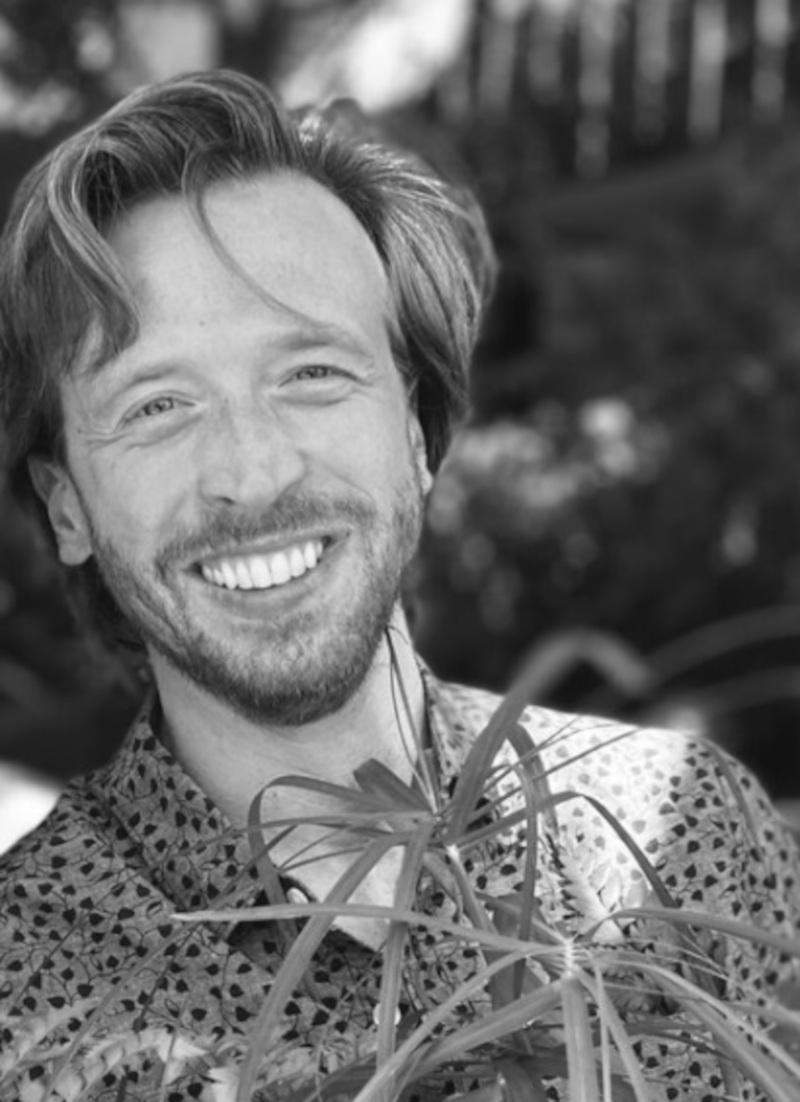
All photos courtesy of the artist except where noted.
Tim Dévlin is a landscape architect, designer, painter, and gardener who challenges the use of everyday objects by making them center objects of mixed media art pieces. Besides ordinary objects, Dévlin seeks inspiration from nature to fully dive into his prominent themes of color, joy, and happiness. In his interview, Dévlin tells us about his journey from landscape architecture to more liberated expressions of art, aligned with his identity as a queer artist. While the pandemic has created more possibilities for displaying his art in public, specifically as outdoor displays in Santa Monica, CA, Dévlin also takes joy in hearing about how he inspired people to create art from everyday objects themselves, adding additional layers of meaning and spontaneous beauty.
In his interview, we also learn about the intricate connection between art and beauty, about creating without overthinking, and other aspects specific to Tim Dévlin’s artistic voice. Dévlin is based in Los Angeles, California.
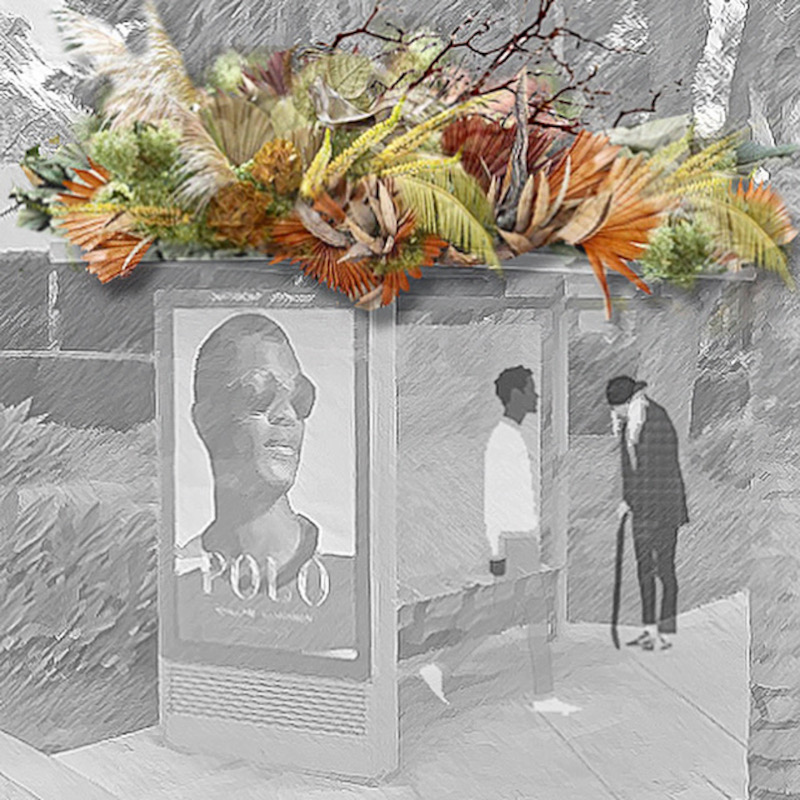
Your art installations are expressions of fluidity and liveliness, often achieved by using flowers and mixed natural materials. Your art seems to be an interpretation of natural and familiar objects. How do you come up with ideas for concepts and materials? Can you explain the artistic process of an installation from start to finish?
The natural world continually inspires me—the beautiful moments but also the ordinary. Living in Southern California, we have so many landscape typologies to draw inspiration from. From seasonal waterfalls to the mysterious marine layer to the heat of the desert and charred hillsides after fires, there is always inspiration in the natural landscape. Ordinary objects are my other source of continued expression. Giving new meaning to commonplace objects changes what we chose to value.
The installation process begins with wild idea-generating with the idea anything is possible. In the box, out of the box, cut open the box, wear the box, …you get the idea. From there, it begins to refine based budget, project brief, program, and client input. When material sourcing begins, the ideas start to become more concrete. I have a stockpile of material that I keep for future projects, along with sketches and idea boards. I typically do a partial build-out and plan out the installation day mentally. It is essential to remain flexible and have backup plans along the way. I always leave room for minor adjustments to make on the actual installation day to benefit the project.
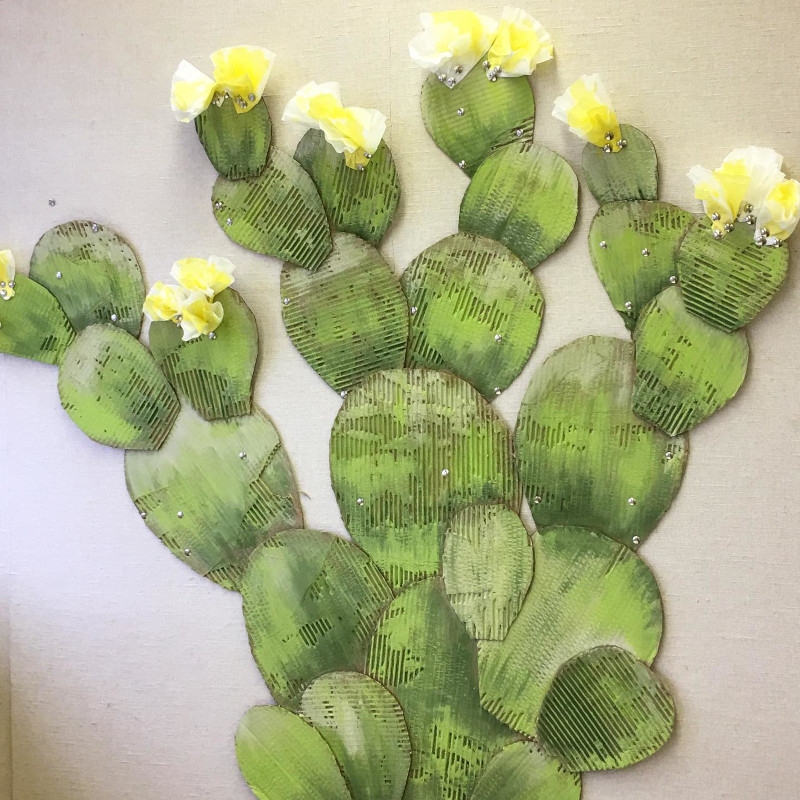
How and when did you first got into contact with art? Was there a special moment or incident in your life which made you dedicate your career to art? Please tell us a little about your background.
For as long as I can remember, I have always had a natural gravitation toward plants, flowers, and the natural world. My college degree is in landscape architecture, and I like to think of my art as painting with plant material. Following school, I worked in various landscape architecture offices and started turning to creating my own art early on as an outlet to channel work-related frustrations. I will always have a love of landscape architecture and appreciation for how it can change people’s lives; however, it became clear early on there would always be many people in the room making creative decisions. My artwork was a way to develop and refine my voice and artistic style and what I really want to say with what I am doing. Creating was the part of the day I looked forward to the most, and the thing that allowed me to lose track of time and not worry if what I was doing was correct in anyone else’s eyes. As I moved through my 20’s my art became a way of processing my sexuality. It was an outlet to leave myself when I did not want to be me. I had some unearthing to do to live an authentic life before fully sharing myself and my love with others. My work, as of late, has a recurring theme of color, joy, and happiness. There is strength in taking joy.

Do you feel that the pandemic has limited your ability to work as an artist? Or has it worked as an accelerator instead?
The pandemic was a time of reflection and reassessment in the direction the Haus of Devlin was going. I was fortunate to find opportunities to show art in ways I had not before. Specifically, installing artwork as part of the downtown Promenade activation for the winter holiday season and Pride month. While we had watched stores closing, to be a part of how we are changing public spaces was incredible. Through this work, I hope that temporary artwork opportunities will remain in our communities as a way of storytelling and uplifting voices.

How much does energy and space influence the outcome of your art? How is producing art in/for indoor spaces different from producing outdoor installations?
I enjoy creating artwork and installations that respond to and highlight the best assets of a space. Creating a botanical installation for the Fairmont Miramar felt like second nature in such a plant-driven space. To me, the most significant difference between making work inside and outside is the lighting. Trees, shadows, and windows all change the feeling of the art as the sun moves through the day. I love to see when different parts of a piece are highlighted depending on the level of the sun.
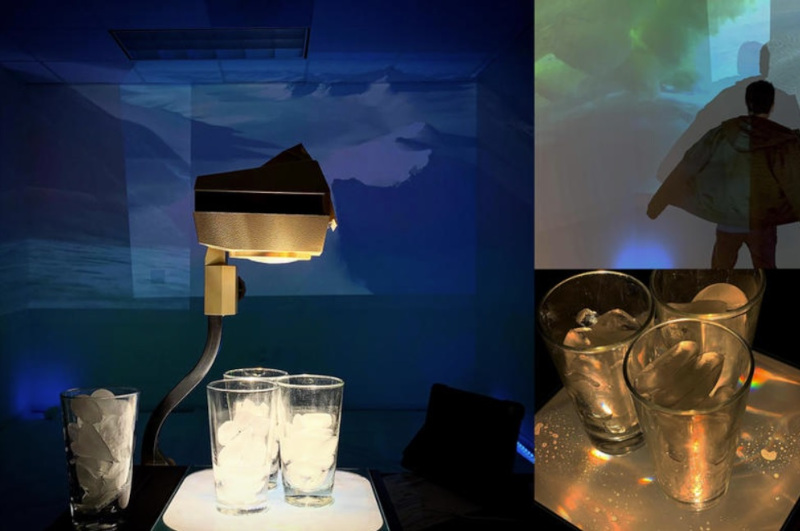
How did you find your unique artistic voice? Do you express yourself differently as a queer artist through your art than in everyday life?
My authenticity and artistic voice grew when I started to throw preconceived notions out the window. I had to let go of the ideas that men should not work with flowers, or that only “real” artists show their work publicly or in a gallery. When I started to unpack who I was, the voice became clearer, and the ideas started to flow more naturally. Initially my art was the safe space I had created for myself to express and process my queerness. As I became more confident and accepting of myself, I started to express my art and myself as one entity instead of separating and compartmentalizing. This really hit home for me as I was creating a lotus flower from plastic spoons. Life really is like the lotus flower; we open one new petal each day to show not only who we are but who we want to be.
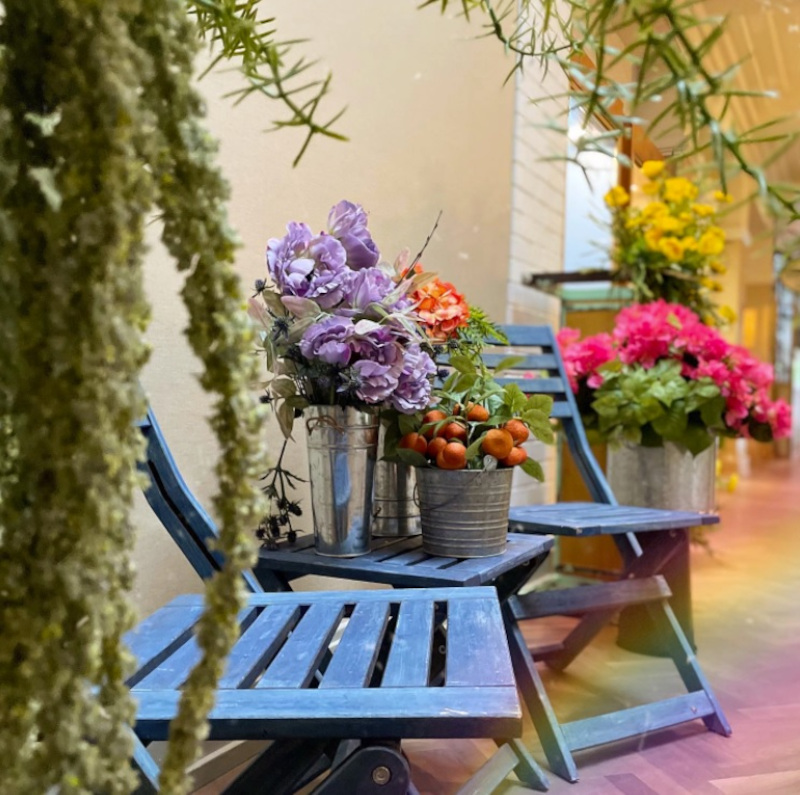
You just completed a floral art installation at the Fairmont Miramar in Santa Monica, CA, to celebrate Pride Month 2021. Was this your first contribution to Pride Celebrations? How do you like to celebrate once an installation has been finished?
This year was my first contribution to Pride Celebrations. While I had created pride artwork pieces on a smaller scale for many years, the opportunity to create a unique installation to be viewed publicly along with other queer artists was an incredible opportunity and moment of unabashed joy. The piece was a visual metaphor for human sexuality as a garden inspired by the words “After the rain come the flowers”—these words resonated with me as Pride Month follows mental health month. We walk through the rain, we feel the rain, but we are not the rain. As a joyful explosion of color, the garden was intended to create an uplifting feeling of love, joy, and acceptance of oneself.
Once an installation is completed, I like to wind down by washing the supplies and cleaning up around the studio. There is a level of satisfaction knowing the work is up, and it’s time to enjoy. I also like to eat something nourishing, drink cold beer, and check-in with people I might have ignored during the final push!
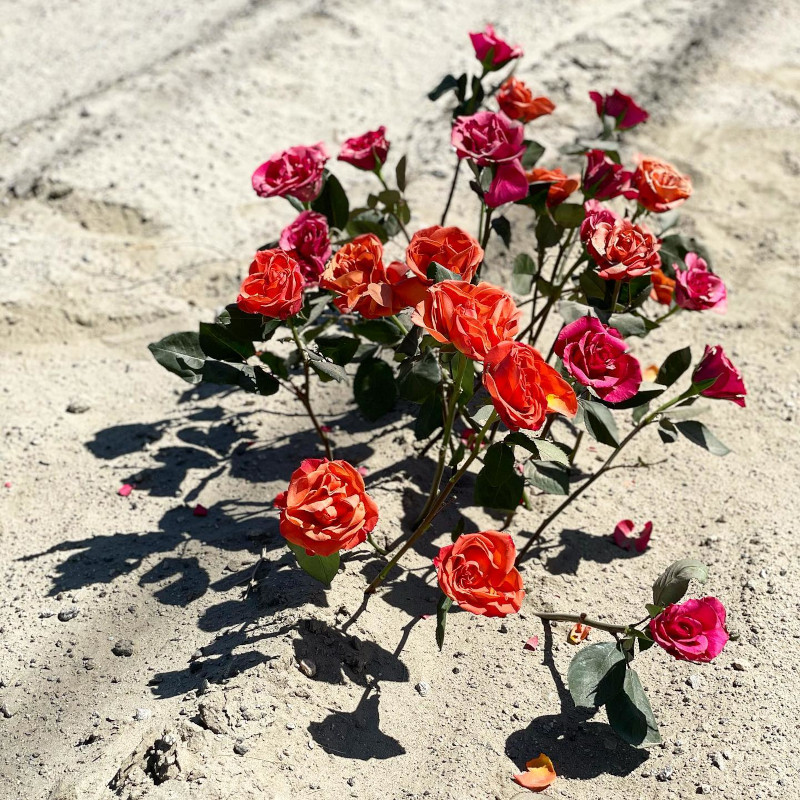
How do you feel about the ephemeral nature of flowers? Is beauty meant to be transitory and should be enjoyed in the moment? Which role does art play in this context?
Beauty is never static; it is constantly changing. Ephemeral spring landscapes in full bloom will always have a place in my heart. Alternatively, a wilted or dried bouquet can also be beautiful in that it can evoke a different reaction or emotion through the changes in color and texture. There is a simplicity and elegance to the stripped-down landscape and natural materials. So much of what we are taught is “beautiful” is a cultural construct. Life is beautiful, but so is death. As spring turns to summer and fades to fall, we see plants wither away, but the constant rebirth is what makes it so beautiful. Art has the power to show different or unexpected moments of beauty and to challenge what we classify as beautiful.
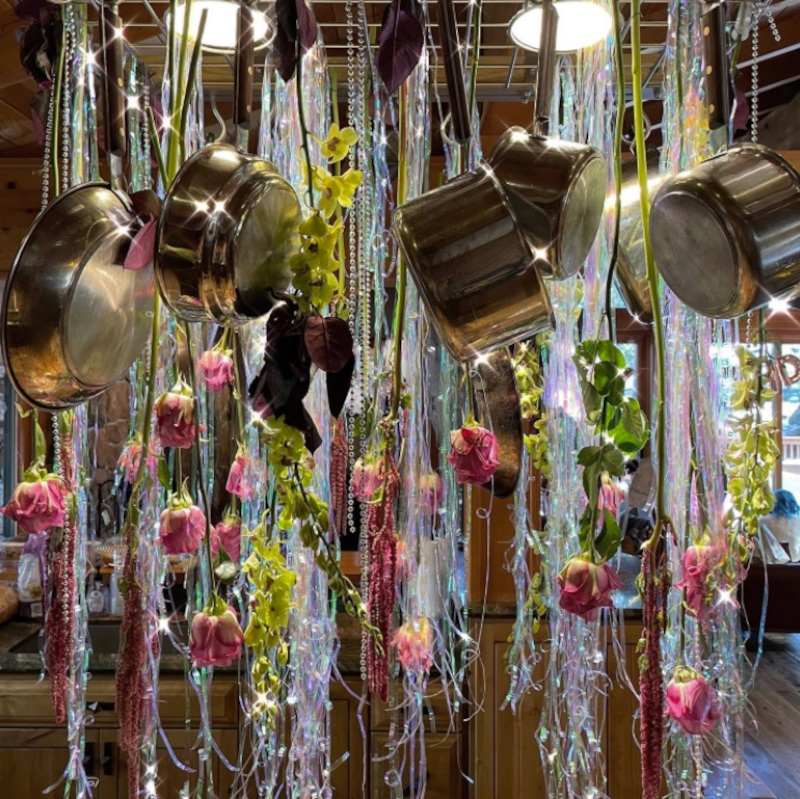
Your installations seem to endow everyday objects with meaning beyond their everyday use. How do you turn objects like pots, cutlery, and plastic plates into art?
My muse for many years has been the transformation of the ordinary. I have always believed there is beauty all around us, no matter where we are, but we don’t always allow our eyes to see it. When everyday items are presently differently, a new coat of paint or changes in scale, for example, they take on new meaning. Instead of reaching for the item on the shelf that everyone else is reaching for, I thought, why not go for what literally nobody desires and make it into something special. I’ve always wanted the art to feel accessible and that it is not something for someone in a specific income bracket to enjoy. Commonplace items around the home can be transformed into unique and meaningful pieces. Through working with everyday objects, a level of unexpected joy has come from people telling me I have inspired them to create from what they have around the house. Original art should be within reach for all.
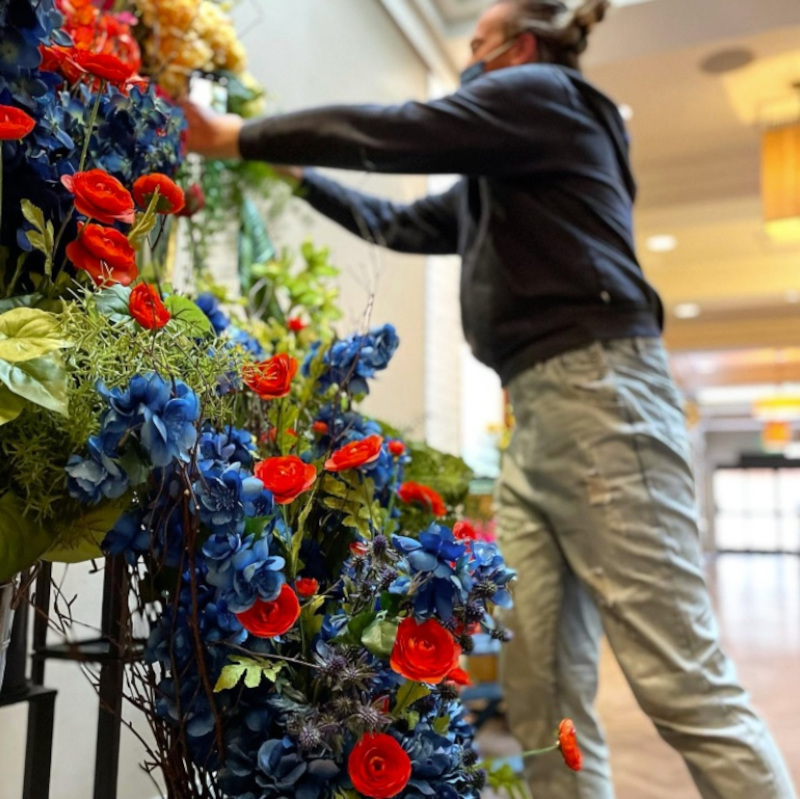
In your opinion – should form follow function? Why? Why not? Elaborate.
I try not to overthink principles such as this and create without definition. I think the best creations at their purest essence come from your gut decisions. Deep down on the inside, we are making decisions about form and function on a subconscious level whether we cognitively recognize the thought or not. There is a simple joy to the act of creating without overthinking. Let it flow from the heart!
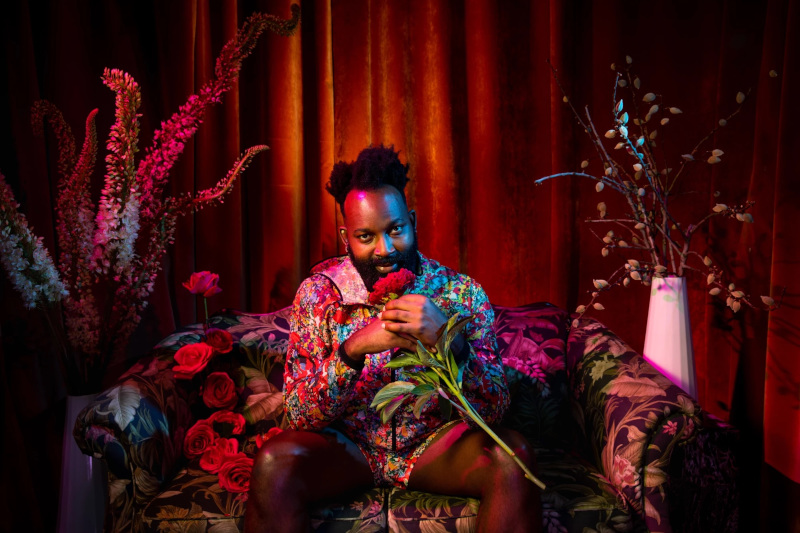
copyright Jay L. Clendenin, published in the LA Times
If you could work with anyone in the world, which artist would you like to collaborate with and what would you like to create?
At this moment in time, I would have to say, Maurice Harris of Bloom & Plume, based locally here in LA. The way Maurice uses flowers continues to amaze me. He goes beyond the arrangement and creates other worlds through the installations. Maurice captures the emotion and can tell a story through vignettes that layer in the human body, natural world, and a delightful amount of kitsch into the floral arrangements. Even when it is a difficult story to tell, the joy always shines through. I am on the edge of my seat to see what Maurice creates next!
|
|

